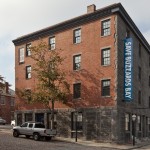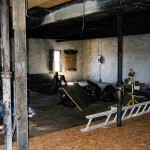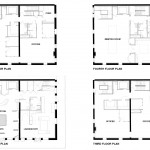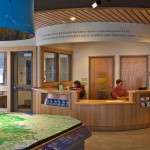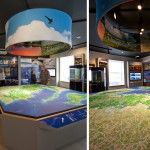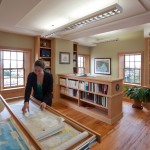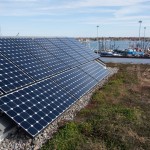Buzzards Bay Center
Project Name: Buzzards Bay Center
This adaptive reuse of the 1832 Coggeshall Counting House resolves the widely discussed tension between historic preservation and sustainable design. The project, located in the New Bedford (Massachusetts) Whaling National Historic Park, creates a new headquarters for the Coalition for Buzzards Bay, an environmental advocacy and education organization dedicated to the preservation and restoration of Buzzards Bay. Completed in strict conformance with Massachusetts Historic Commission and U.S. Department of Interior requirements, the renovation restored the exterior to its original appearance and revitalized the interior, where new offices, a laboratory, conference rooms, a meeting room, and a library support the Coalition’s programs. Thus, a building that was in an advanced state of deterioration is now a vital element in the ongoing rehabilitation of New Bedford’s waterfront.
The project also adds a critical educational component to the New Bedford waterfront. In the first floor Visitor Center, exhibits designed by the architect and its graphic design consultant describe the history of the Bay, water quality issues, threats to the Bay, and the building’s green features. In the main stair, a map of the continuous coastline of Buzzards Bay enlivens the experience of traveling between floors.
The building’s condition and small footprint presented a number of challenges. Services and support functions were located along the west wall, leaving the balance of each floor easy to adapt to evolving needs. The damp crawl space was eliminated by removing the first floor, backfilling, and pouring a new insulated concrete slab. Public meeting spaces and a library were located on the top floor to take advantage of views. New light monitors (reminiscent of the many factory roofs in New Bedford) flood these spaces with north light and provide natural ventilation.
In accordance with the clients’ wishes, the adaptive reuse serves as an example of responsible development and design. Restoring an historic building saved the “embodied” energy of the existing structure. The well-insulated envelope and solar power reduce and offset energy use. The innovative, efficient air-source heat pump HVAC system satisfies the Coalition’s goal that no fossil fuels be used in the building. Finally, the vegetated roof reduces storm water runoff by up to fifty percent. Measured energy use over the last year was 62,619 KWH, or 18,765 Btu/sf/year, which compares favorably with the national average for office buildings of 60,000 Btu/sf/year. HVAC loads were modeled at 17,263 Btu/sf/year; the actual metered consumption was 15,178 Btu/sf/year.

